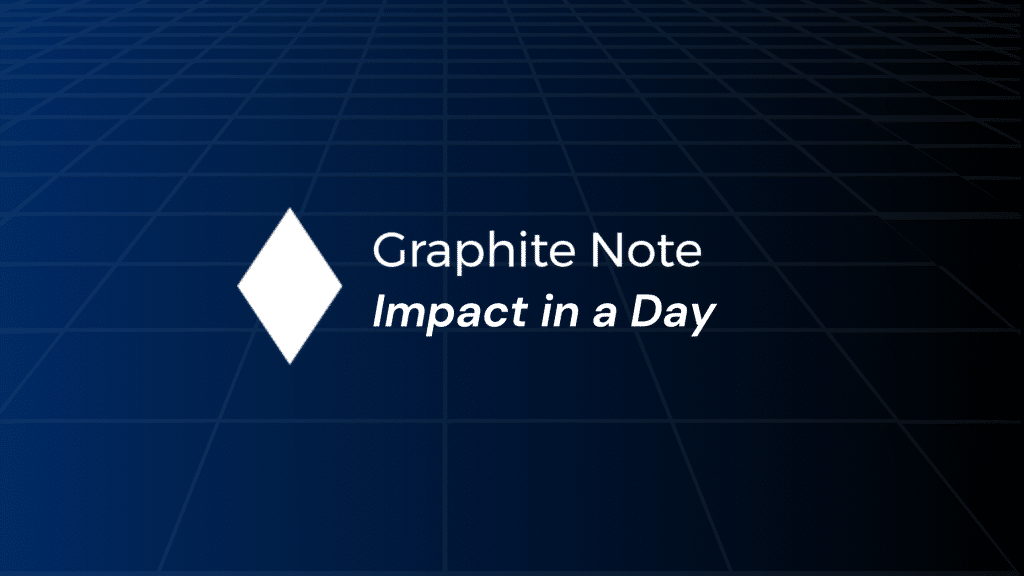One strategy that has been gaining traction among digital agencies is predictive ad targeting. By using the power of data and analytics, digital agencies can maximize their return on investment (ROI). Digital agencies can deliver targeted ads to the right audience at the right time. In this article, we will explore the concept of predictive ad targeting. We discuss its role in maximizing ROI, implementation strategies, measuring success, and future trends. We also outline how a no-code predictive analytics platform like Graphite Note can help digital agencies achieve their goals. Predictive marketing has become a fundamental part of strategizing for digital agencies. Predictive analytics and predictive advertising can help agencies create predictive audiences, assess ad performance before it goes live, and structure advertising campaigns more effectively, to ensure they reach their target audience.
Understanding Predictive Ad Targeting
Predictive targeting is the practice of using data and analytics to identify patterns and trends. These help determine the likelihood of a user taking a desired action. This includes clicking on an ad or making a purchase. By using machine learning algorithms and predictive models, digital agencies can create highly targeted and personalized ad campaigns that resonate with their target audience.
The Science Behind Predictive Advertising
At the heart of predictive advertising is data. Digital agencies collect vast amounts of data from various sources. These include website analytics, social media platforms, customer relationship management systems, and more. This data is analyzed using advanced statistical techniques and machine learning algorithms to uncover actionable insights.
By analyzing website analytics, digital agencies can determine which pages users visit most frequently, how long they stay on each page, and what actions they take before leaving the site. This information can help agencies understand user behavior and preferences. Digital agencies can then tailor their ads accordingly.
Social media platforms also provide valuable data for predictive ad targeting. By analyzing user interactions, agencies can gain insights into user interests and preferences. This information can be used to create highly targeted ads. These are more likely to resonate with the target audience. This helps agencies build predictive audiences, which can improve ad performance. Predictive analysis bolsters future outcomes in innovative ways.
Customer relationship management systems play an important role in predictive ad targeting as well. By tracking customer interactions and purchase history, agencies can identify patterns and trends that indicate a user’s likelihood to make a purchase. This information can be used to deliver ads at the right time and in the right context, increasing the chances of conversion.
Benefits of Predictive Ad Targeting
The benefits of predictive ad targeting include:
- Ensuring the right message reaches the right audience: Instead of blasting generic ads to a broad audience, predictive ad targeting enables agencies to deliver personalized messages to individuals who are most likely to be interested in their products or services.
- Identifying potential customers: With predictive ad targeting, digital agencies can identify users as potential customers and deliver ads, along with personalized offers or discounts. This level of personalization improves engagement rates and increases the likelihood of conversions.
- Optimize their budgets: Predictive ad targeting helps digital agencies optimize their advertising budgets. By focusing their resources on the audience segments that are most likely to convert, agencies can minimize wasted ad spend and maximize their return on investment (ROI). Instead of spending a significant portion of their budget on a broad ad campaign that reaches a wide audience, agencies can allocate their resources towards specific segments that have shown a higher propensity to convert. This level of precision targeting leads to higher click-through rates, improved conversion rates, and ultimately, better overall campaign performance.
Predictive ad targeting is a powerful tool that enables digital agencies to deliver highly targeted and personalized ad campaigns. By leveraging data and analytics, agencies can understand user behavior, preferences, and intent, allowing them to reach the right audience with the right message at the right time. The benefits of predictive ad targeting include improved engagement rates, increased conversions, and optimized advertising budgets, making it an essential strategy in today’s digital advertising landscape.
The Role of Predictive Ad Targeting in Maximizing ROI
How Predictive Ad Targeting Increases ROI
How Predictive Ad Targeting Increases ROI
One of the key ways predictive ad targeting increases ROI is by reducing ad waste. Traditional advertising methods often involve casting a wide net. Traditional advertising targets a broad audience in the hopes of capturing a few interested individuals. This results in ad spend being wasted on people who are unlikely to convert. With predictive analytics, agencies can build strategies to cater for predictive audiences. This ensures a higher ROI. Predictive audiences are calculated with lookalike audiences in mind. Knowing more about predictive audiences can help agencies to optimize ad copy, ensure that target audiences are reached, and potential customers found.
With predictive ad targeting, digital agencies can narrow their focus and concentrate their efforts on individuals who exhibit specific behavior or characteristics that indicate a higher likelihood of conversion. By delivering tailored ads to these high-value prospects, agencies can optimize their ad spend and achieve higher ROI.
The Connection Between Predictive Ad Targeting and ROI
Another important aspect of predictive ad targeting’s impact on ROI is the ability to predict customer lifetime value (CLV). By analyzing past customer behavior and purchase patterns, digital agencies can determine which customers are more likely to make repeat purchases or become loyal advocates. This knowledge of predictive audiences is key for strategizing towards success. Agencies can allocate their resources towards acquiring and nurturing customers with a higher customer lifetime value, thereby maximizing their long-term ROI.
Implementing Predictive Ad Targeting in Digital Agencies
Steps to Incorporate Predictive Ad Targeting
Steps to Incorporate Predictive Ad Targeting
Implementing predictive ad targeting involves a systematic approach that encompasses data collection, analysis, and campaign optimization. The following steps can serve as a guide for digital agencies looking to embrace predictive ad targeting:
- Identify business objectives: Clearly define the goals and objectives of the ad campaign. Do you want to know more about your predictive audiences? How will your ad copy perform? Where should you allocate ad spend? What can the statistical algorithms tell you about where to spend your marketing dollars? Do lookalike models help to isolate the right audience segments? Are you sending the right message to the right people? Predictive analysis can be a powerful tool to help you shape your digital strategies.
- Collect relevant data: Gather data from various sources, including website analytics, social media platforms, and customer databases.
- Analyze the data: Use statistical analysis and machine learning algorithms to uncover patterns, trends, and insights.
- Create targeted ad segments: Divide the audience into specific segments based on their behavior, demographics, and preferences.
- Develop personalized ad content: Tailor the ad content to resonate with each segment, leveraging the insights gained from the analysis.
- Monitor and optimize: Continuously track the performance of the ad campaign and make adjustments based on real-time data.
Overcoming Challenges in Predictive Ad Targeting Implementation
While the benefits of predictive ad targeting are clear, implementing this strategy can present challenges for digital agencies. One of the main challenges is data quality. Digital agencies must ensure that the data they collect is accurate, relevant, and up-to-date. Additionally, they must have the right tools and expertise to analyze the data effectively. This is where a platform like Graphite Note can be invaluable.
Graphite Note is a no-code predictive analytics platform that empowers digital agencies to leverage the power of predictive ad targeting without the need for extensive coding or data science knowledge. With its intuitive interface and powerful algorithms, Graphite Note simplifies the process of data analysis and enables agencies to extract actionable insights from their data quickly. By streamlining the implementation of predictive ad targeting, Graphite Note helps digital agencies overcome the challenges associated with this strategy and achieve better results.
Measuring the Success of Predictive Ad Targeting
Measuring the success of predictive ad targeting is crucial for ongoing optimization and improvement. Digital agencies need to track key metrics and interpret the results to gain insights into the effectiveness of their campaigns.
Key Metrics for Evaluating Predictive Ad Targeting
There are several key metrics that digital agencies should monitor to evaluate the success of their predictive ad targeting campaigns:
- Conversion rate: The percentage of users who take the desired action, such as making a purchase or filling out a form.
- Click-through rate (CTR): The percentage of users who click on the ad after seeing it.
- Cost per acquisition (CPA): The average cost of acquiring a customer.
- Return on ad spend (ROAS): The ratio of revenue generated to the amount spent on advertising.
Interpreting the Results of Predictive Ad Targeting
Interpreting the results of predictive ad targeting requires a combination of data analysis and contextual understanding. By comparing the key metrics against the defined business objectives, digital agencies can determine the effectiveness of their campaigns and identify areas for improvement.

Future Trends in Predictive Ad Targeting
As technology continues to advance, so does the field of predictive targeting. Here are some future trends that digital agencies should keep an eye on:
Emerging Technologies in Predictive Ad Targeting
Artificial intelligence (AI) and machine learning (ML) are poised to play an even larger role in predictive ad targeting. These technologies have the potential to further enhance the accuracy and effectiveness of predictive targeting, allowing digital agencies to deliver even more precise and personalized ads.
The Future of ROI and Predictive Ad Targeting
With the increasing emphasis on data-driven marketing, predictive targeting will continue to be a critical strategy for maximizing ROI. As digital agencies refine their techniques and leverage advanced technologies, the connection between predictive ad targeting and ROI will only grow stronger.
Conclusion
Predictive ad targeting represents a powerful tool for digital agencies looking to maximize their return on investment. By harnessing the power of data and analytics, agencies can deliver targeted ads that resonate with their audience, optimize their advertising budgets, and ultimately achieve better results. While implementing predictive ad targeting may present challenges, platforms like Graphite Note eliminate the need for extensive coding or data science expertise, making it accessible to digital agencies of all sizes. As the future of digital marketing unfolds, predictive ad targeting will continue to be at the forefront, driving higher ROI and helping agencies thrive in the competitive landscape.
Want to see how Graphite Note works for your AI use case? Book a demo with our product specialist!




